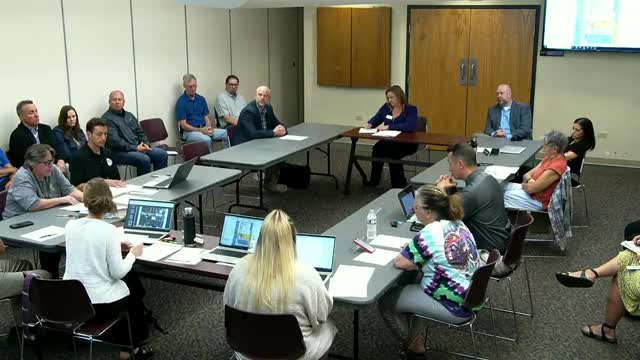Experts warn against groundwater risks from library project
July 04, 2024 | McHenry County, Illinois

This article was created by AI summarizing key points discussed. AI makes mistakes, so for full details and context, please refer to the video of the full meeting. Please report any errors so we can fix them. Report an error »

In a recent government meeting, officials discussed the implications of a proposed geothermal well installation at the Elkon Island Library site, particularly concerning environmental health and groundwater protection. The meeting highlighted the established setback regulations for stormwater dry wells, which have been in place for over 30 years. Currently, a 200-foot setback is required from potential contamination routes, but this can be reduced to 75 feet if the well and the potential contamination source are owned by the same property owner.
The department's representatives emphasized that the 75-foot separation distance is deemed appropriate by environmental and public health professionals in Illinois, provided that proper construction techniques are employed. They argued that newly constructed wells should adhere to all applicable standards, and variances for new installations are not commonly granted, especially when existing concerns could be exacerbated.
Concerns were raised regarding the specific geology of the Algonquin area, identified as a sensitive aquifer recharge area (SARA). The presence of sandy and gravelly soils in this region poses a risk for contaminants, particularly from stormwater runoff, which can include harmful substances from parking lots. The officials noted a past incident where road salts migrated into a stormwater dry well, contaminating nearby water wells.
The proposed geothermal system, which would be located only 25 feet from a class 5 injection well, raised alarms due to its potential to compromise groundwater quality. The officials argued that allowing such a variance would contradict sound environmental health practices and the protective measures recommended by various agencies.
During the meeting, board members expressed their commitment to environmental sustainability but sought clarification on the interaction between the proposed geothermal wells and the existing injection well. The discussion underscored the delicate balance between advancing renewable energy initiatives and safeguarding public health and environmental integrity.
The department's representatives emphasized that the 75-foot separation distance is deemed appropriate by environmental and public health professionals in Illinois, provided that proper construction techniques are employed. They argued that newly constructed wells should adhere to all applicable standards, and variances for new installations are not commonly granted, especially when existing concerns could be exacerbated.
Concerns were raised regarding the specific geology of the Algonquin area, identified as a sensitive aquifer recharge area (SARA). The presence of sandy and gravelly soils in this region poses a risk for contaminants, particularly from stormwater runoff, which can include harmful substances from parking lots. The officials noted a past incident where road salts migrated into a stormwater dry well, contaminating nearby water wells.
The proposed geothermal system, which would be located only 25 feet from a class 5 injection well, raised alarms due to its potential to compromise groundwater quality. The officials argued that allowing such a variance would contradict sound environmental health practices and the protective measures recommended by various agencies.
During the meeting, board members expressed their commitment to environmental sustainability but sought clarification on the interaction between the proposed geothermal wells and the existing injection well. The discussion underscored the delicate balance between advancing renewable energy initiatives and safeguarding public health and environmental integrity.
View full meeting
This article is based on a recent meeting—watch the full video and explore the complete transcript for deeper insights into the discussion.
View full meeting
